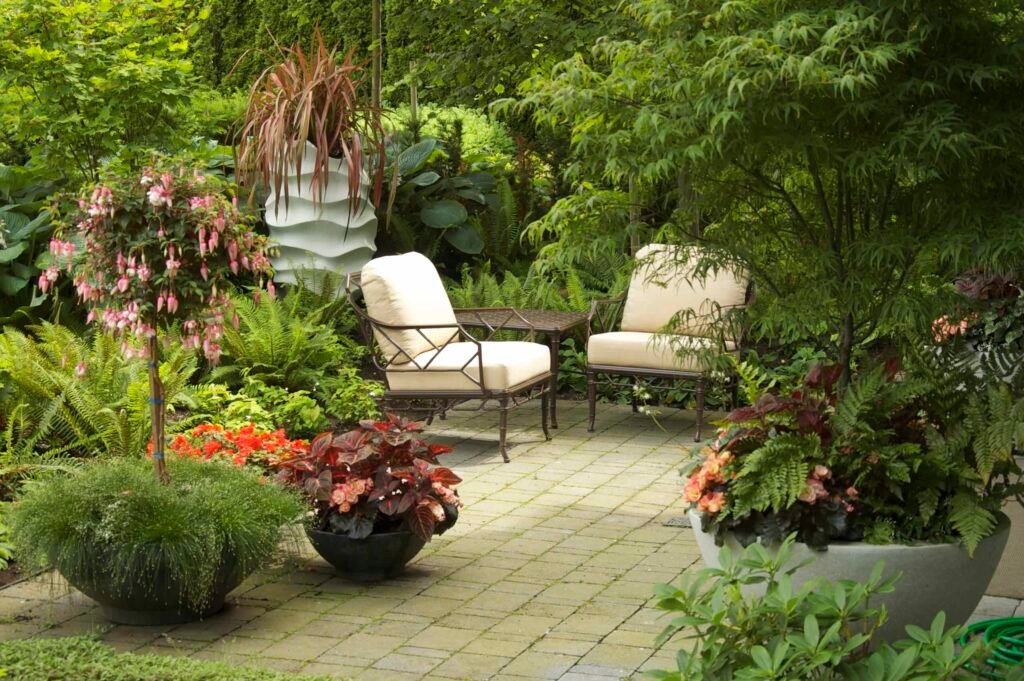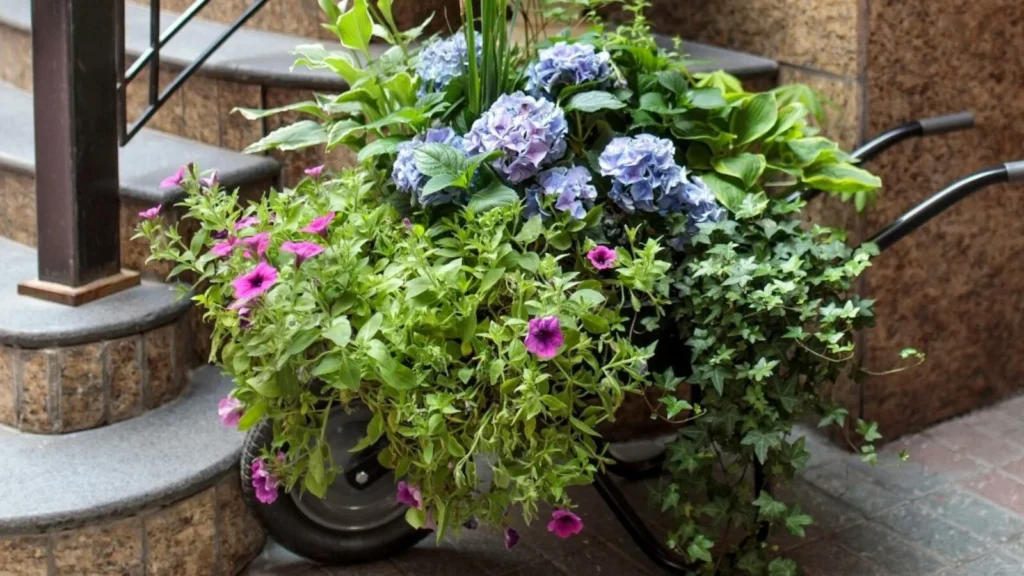Container Gardening in the Shade: What Really Works

Not every gardener has borders to dig or woodland paths to plant. For many of us, shade gardening happens on patios, balconies, or tucked-in corners beneath trees. And that’s where containers come in.
Over in the Shade Gardening Facebook Group, a few questions have come up again and again:
Can I grow a shade garden in pots?
What plants will thrive in a shady courtyard?
Do I need special soil for containers in the shade?
This guide is here to answer those questions and show you how to create beautiful, practical, and joy-filled containers—even in the shadiest spots.
The Joy of Shade Containers
Container gardening in low light has its own kind of charm. You’re not trying to coax sun-loving annuals into life—you’re designing a space full of texture, contrast, and even fragrance. It’s like creating a little stage set, one that evolves with the seasons and softens the hard edges of patios, porches, and shady corners.
Half-barrels filled with ferns and heucheras under a beech tree, or hellebores spilling over the sides of a north-facing doorstep—these arrangements bring year-round structure, seasonal interest, and that peaceful, woodland feel that so many of us love.
Top Tips for Shade Container Success
1. Use a moisture-retentive, well-draining mix
Start with a high-quality compost and add grit, perlite, or leaf mould. For containers in dry shade (like under overhangs), consider water-retaining granules.
2. Choose pots that help maintain moisture
Terracotta looks lovely but dries out quickly. For shady areas, glazed ceramic or plastic pots retain moisture longer and are better for many shade plants.
3. Water wisely
Shade slows evaporation, but pots can still dry out—especially in summer. Check soil regularly and water deeply, allowing the excess to drain fully.
4. Feed regularly, but lightly
Shade plants don’t demand a lot, but occasional feeding keeps foliage lush. Use a half-strength liquid feed every 2–3 weeks in the growing season.
Best Plants for Shady Containers

Here are some tried-and-tested performers that thrive in containers and look stunning in low light:
Heuchera (Coral Bells)
Colourful foliage in rich purples, soft greens, peach, and even silver tones. Perfect for mid-height structure.
Ferns
Try Athyrium or Dryopteris for soft, arching textures. Great in larger containers or as background plants.
Brunnera ‘Jack Frost’
Silvery, heart-shaped leaves and tiny blue flowers in spring—one of the most elegant plants for containers.
Carex (Sedges)
Fine, arching grass-like leaves add motion and structure. Varieties like ‘Evergold’ or bronze-leaved types work beautifully in shade.
Lamium
A trailing groundcover with silver leaves and pink or purple blooms. Ideal for softening the edges of containers.
Hellebores (Lenten Rose)
Evergreen foliage and long-lasting winter-to-spring blooms. Great for structure and early interest.
Tiarella (Foamflower)
Compact, frothy blooms and attractive foliage that pairs well with ferns and heucheras.
Designing Beautiful Shade Containers
Think in layers:
Thrillers (tall focal plants): ferns, hellebores
Fillers (mid-height structure): heucheras, brunnera
Spillers (trailing plants): lamium, ivy, creeping jenny
Use odd numbers of containers (groups of 3 or 5) and mix heights for a more natural, dynamic look. Add decorative mulch, moss, or bark to cover soil and give a woodland finish.
Small Space? Big Impact.
Containers are perfect for:
Shady balconies
Courtyard corners
Beneath trees where digging isn’t an option
Porch steps or shaded patios
With the right plants and a little care, you can bring texture, movement, and interest to even the smallest shady nook.
Want More?
A full podcast episode on this topic is coming soon—featuring plant combos, listener questions, and seasonal container swaps.
Subcribe to our newsletter